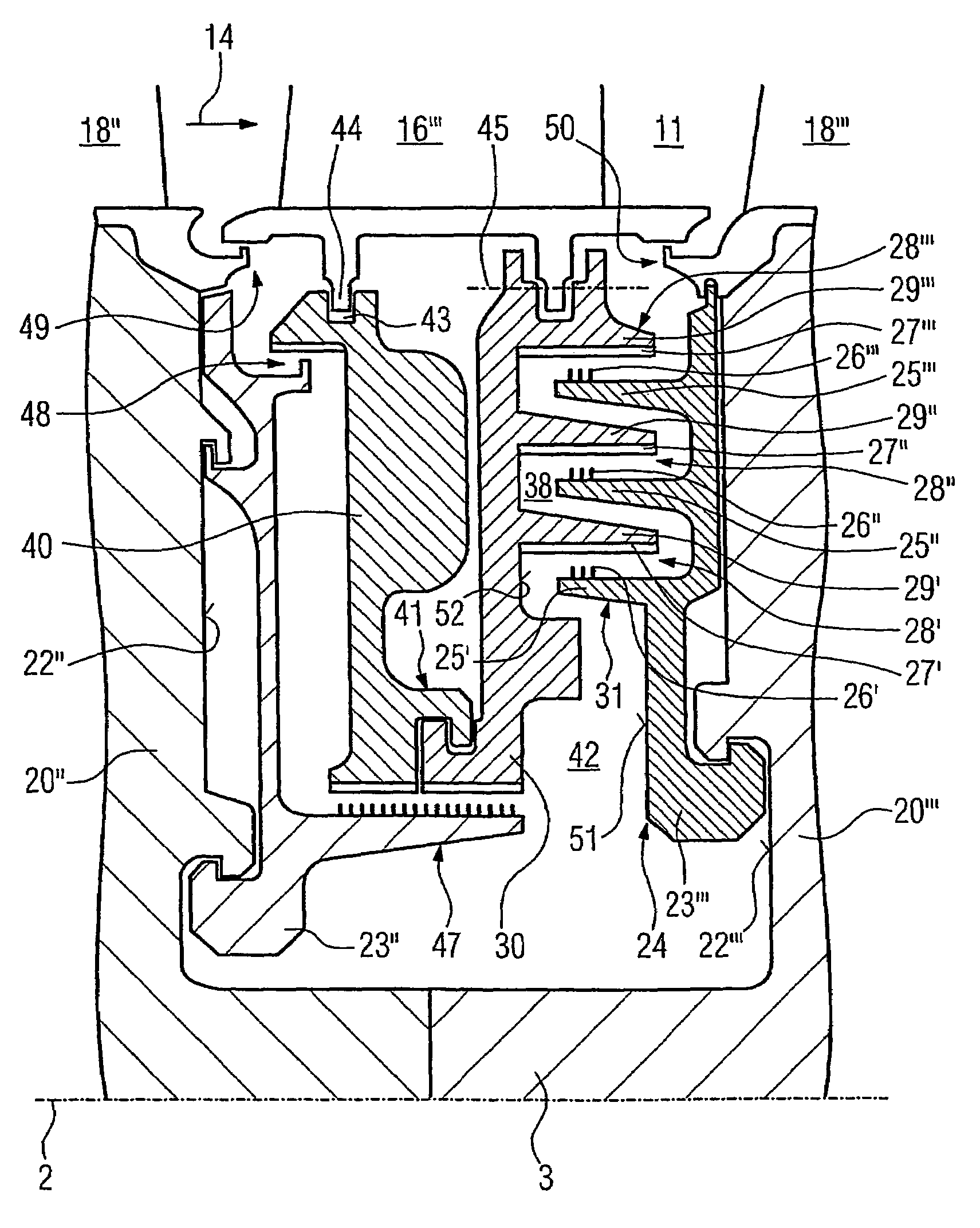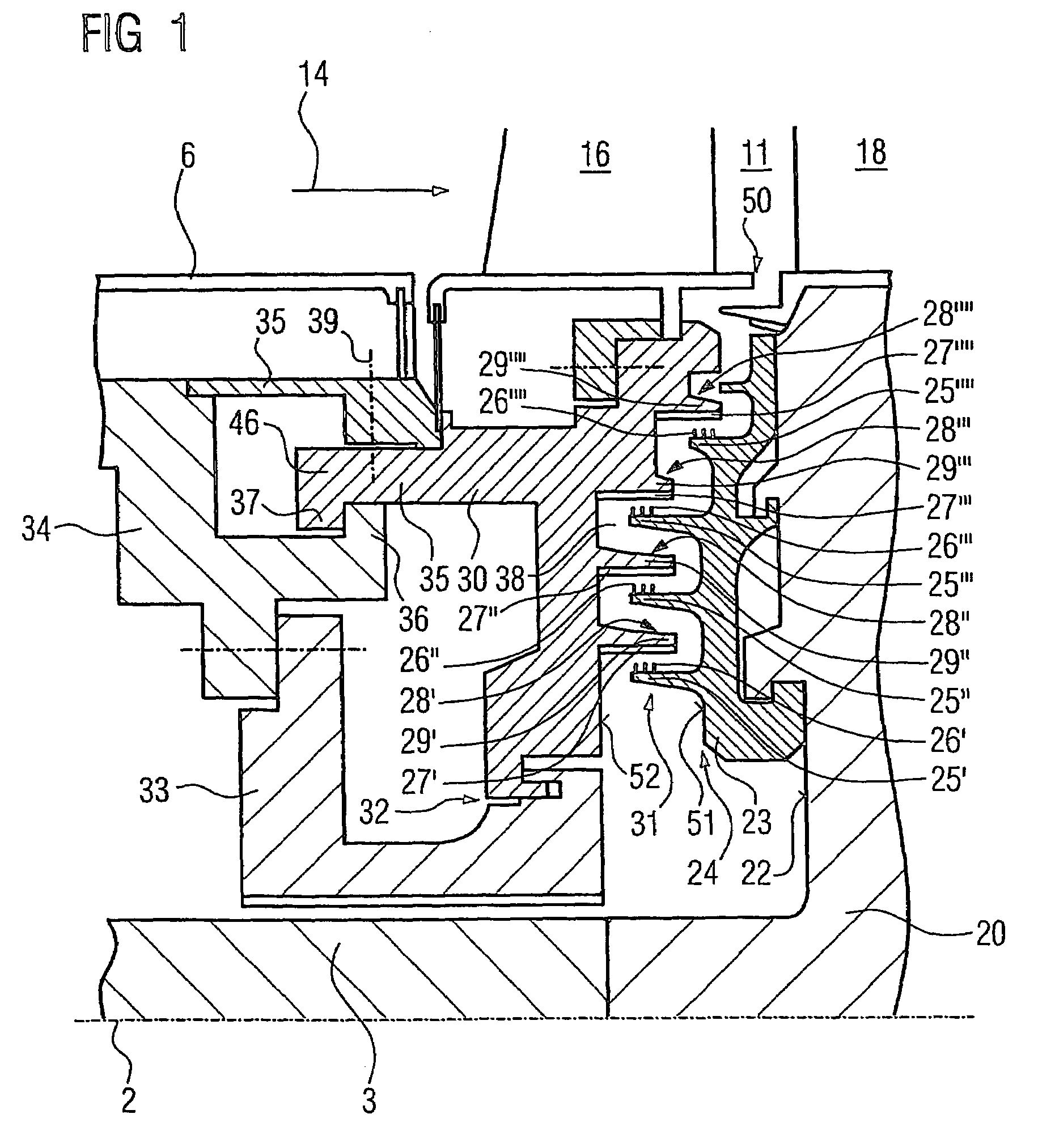Labyrinth seal in a stationary gas turbine
a technology of stationary gas turbine and labyrinth seal, which is applied in the direction of liquid fuel engines, machines/engines, manufacturing tools, etc., can solve the problems leakage flows, and achieve the effect of reducing the efficiency of stationary gas turbines
- Summary
- Abstract
- Description
- Claims
- Application Information
AI Technical Summary
Benefits of technology
Problems solved by technology
Method used
Image
Examples
Embodiment Construction
[0025]FIG. 3 shows a stationary gas turbine 1 in the form of a partial longitudinal, section. In its interior, it has a rotor 3, which is mounted such that it can rotate about an axis of rotation 2 and is also referred to as the turbine rotor or rotor shaft. An intake housing 4, a compressor 5, a toroidal annular combustion chamber 6 with a plurality of coaxially arranged burners 7, a turbine 8 and the exhaust-gas housing 9 follow one another along the rotor 3. The annular combustion chamber 6 in this case forms a combustion space 10 which is in communication with an annular hot-gas duct 11, where four turbine stages 12 connected in series form the turbine 8. Each turbine stage 12 is formed from two blade / vane rings. As seen in the direction of flow of a working fluid 14, a guide vane ring 17 is followed in the hot-gas duct 11 by a ring 15 formed from rotor blades 18. The guide vanes 16 are secured to the stator 19, whereas the rotor blades 18 of a ring 15 are secured to the rotor 3...
PUM
| Property | Measurement | Unit |
|---|---|---|
| inner diameter | aaaaa | aaaaa |
| arc length | aaaaa | aaaaa |
| stability | aaaaa | aaaaa |
Abstract
Description
Claims
Application Information
 Login to View More
Login to View More - R&D
- Intellectual Property
- Life Sciences
- Materials
- Tech Scout
- Unparalleled Data Quality
- Higher Quality Content
- 60% Fewer Hallucinations
Browse by: Latest US Patents, China's latest patents, Technical Efficacy Thesaurus, Application Domain, Technology Topic, Popular Technical Reports.
© 2025 PatSnap. All rights reserved.Legal|Privacy policy|Modern Slavery Act Transparency Statement|Sitemap|About US| Contact US: help@patsnap.com



